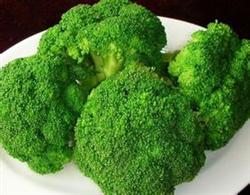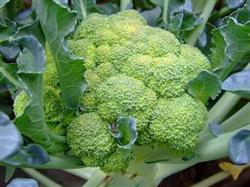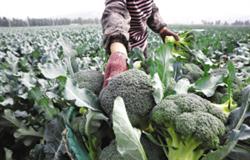Management techniques of autumn radish and cauliflower

Radish generally use direct seeding, can sow 3 lines per box, 35-45 cm apart (press a litter by hand) for on-demand sowing, can first sow 2-4 seeds in the nest and then water them, and then cover with a small amount of fine soil after waiting for the water to dry (it is appropriate to not see the seeds). Cover the black mulch after sowing and observe that the sowing film will be broken after emergence. After emergence, two seedlings were selected from each litter. In case of drought, fertilizer can be applied once, and 10 tons of farm manure mixed with 50-60 water per mu can be irrigated once, and can be irrigated again when weeding in the future. 2-3 times of intertillage and weeding can be carried out in the growing period of radish. The waterlogging tolerance of cauliflower is poor. When planting cauliflower in rainy areas and under the environment of high groundwater level, the technical measures of deep trench and tall box should be taken to facilitate drainage, which is the key to the success of cauliflower cultivation. Continuous cropping of cauliflower is also avoided, and melons, eggplant fruits and legumes are suitable for previous cropping. Fertile loam and clay loam should be selected for field cultivation. Heavy application of base fertilizer, 3000 kg of mature farm manure, 50 kg of phosphate fertilizer, 20 kg of potash fertilizer, 25 kg of urea, and then ploughing and making compartments. Autumn cauliflower can be 4 meters open, early-maturing varieties planting 8 rows, late-maturing varieties planting 6 rows. Cauliflower should be planted in cloudy or sunny afternoon and watered thoroughly after planting. Transplanting should not be too deep, the nutrition cup soil should be parallel to or slightly higher than the face soil, and enough fixed root water should be applied. If the soil is dry for a long time, it is best to fill the trench with enough water and wet the surface before transplanting, so as to reduce the soil temperature. Ploughing once after slow seedling, and watering. If there are too many Rain Water and the humidity of the field is too high, more ploughing should be carried out to keep the roots dry and loose and ventilated. Often many cauliflower fields grow slowly or even stop growing because they are too wet. Cauliflower fields should not only be kept moist, but also loosen the soil and weed in time. Cauliflower is prone to downy mildew at seedling stage and under the conditions of high temperature and high humidity in the field, which can be controlled by spraying chlorothalonil, Dysen zinc, Ruidu, Shidufan, Kelu, Anke and so on. Cauliflower is prone to pests such as cabbage worm, diamondback moth, yellow striped beetle and so on. Deltamethrin, dimethoate, chlorpyrifos, Regent, avermectin, Bt, Nongdile and other pesticides can be used to control them.
- Prev

How to plant broccoli for high quality and high yield?
Broccoli, also known as broccoli, green cauliflower, with fleshy, fat and tender flower branches composed of flower balls for food, complete nutrition, high nutritional value, crisp and tender texture, refreshing and palatable, loved by consumers. Broccoli likes warm and cool climate, humid environment, anti-inflammatory heat, drought, not resistant to frost; the suitable temperature for seed germination is 15 Mel.
- Next

Occurrence and control of hollow in main stem of broccoli
Broccoli, also known as broccoli, is suitable for growing in cool climates. its products have tender texture, unique flavor and rich nutrition, especially high vitamin C content, so it is a fashionable high-grade vegetable. Lantian County mountain area due to high altitude, cool and humid summer climate, few diseases and insect pests, suitable for broccoli growth, especially.
Related
- Where is it suitable to grow horseradish in China? it is expected to see the middle altitude horseradish in Alishan.
- How to prevent tomato virus disease reasonably? (Control methods included)
- Many people like to plant towel gourd on the balcony. What are the main points of this method and management?
- What crops can chili peppers be mixed with?
- Fertilization techniques and matters needing attention in Tomato
- What are the grafting techniques for peach seedlings in spring?
- Harm and control methods of root swelling disease of Chinese cabbage
- What are the pests of sweet potatoes? How to prevent and cure it?
- Symptoms, causes and Control methods of navel Rot in Tomato
- The cause of "Cucumber rotten bibcock" in Farmers' planting Cucumber and its Control Plan

